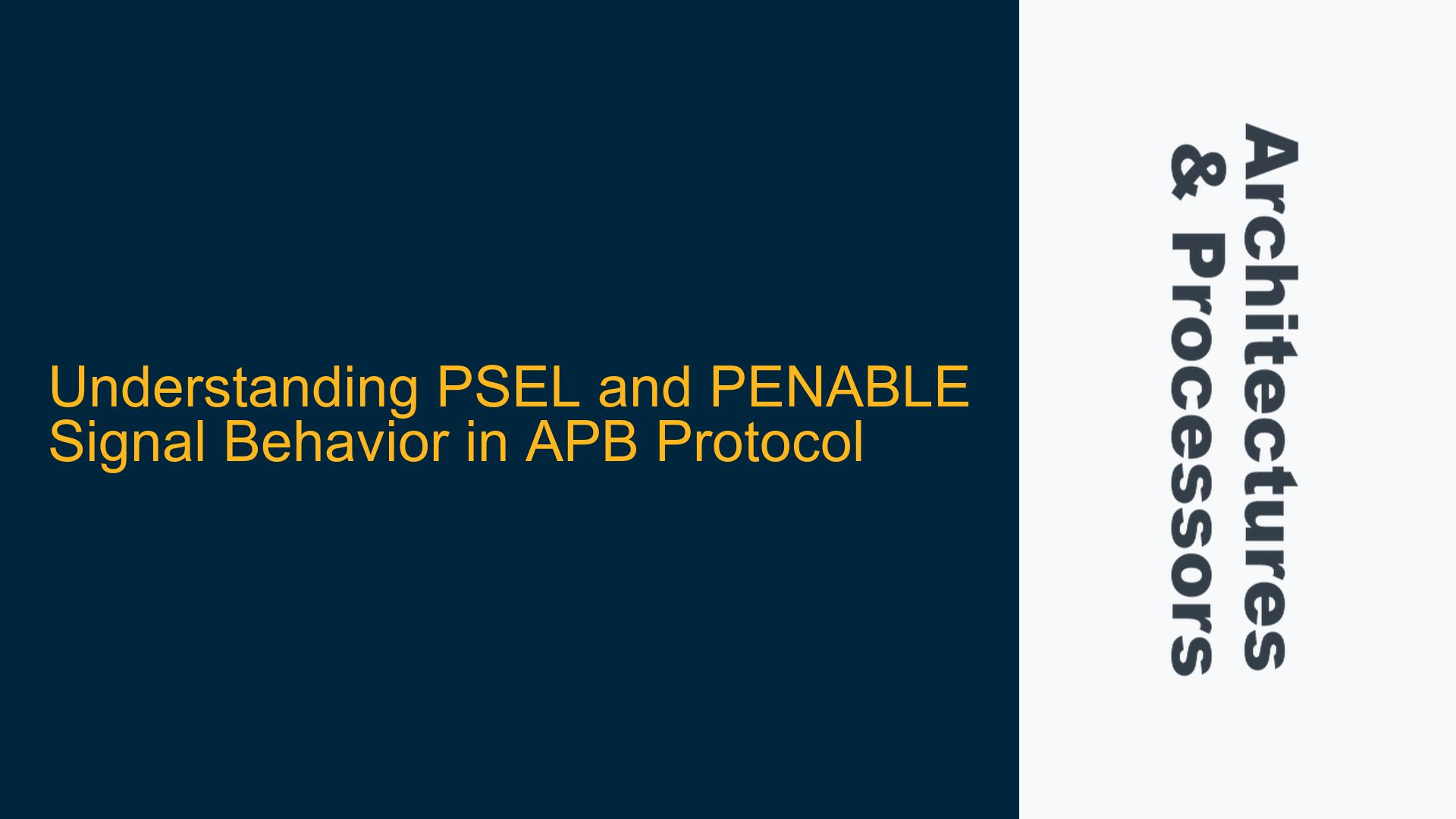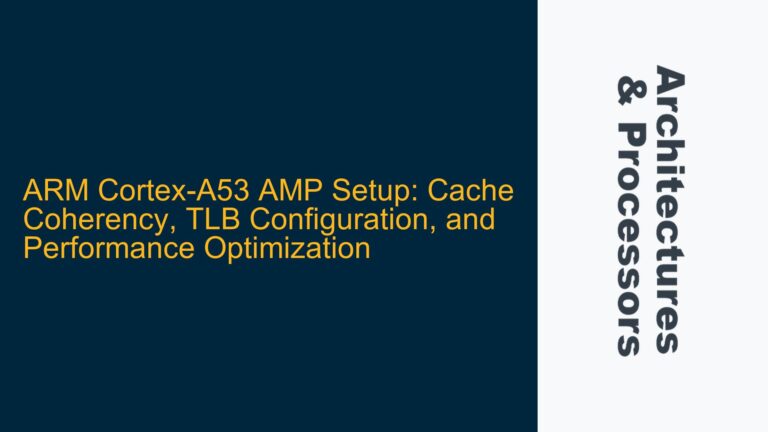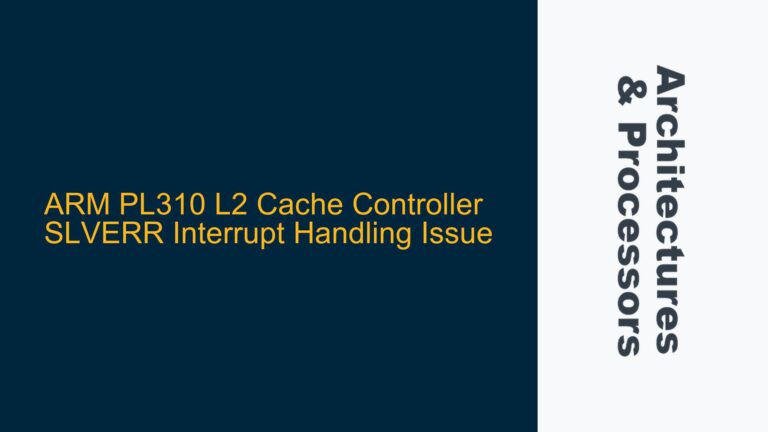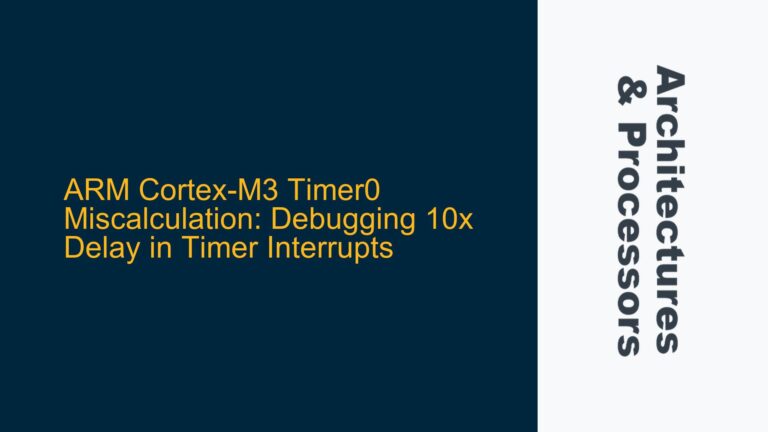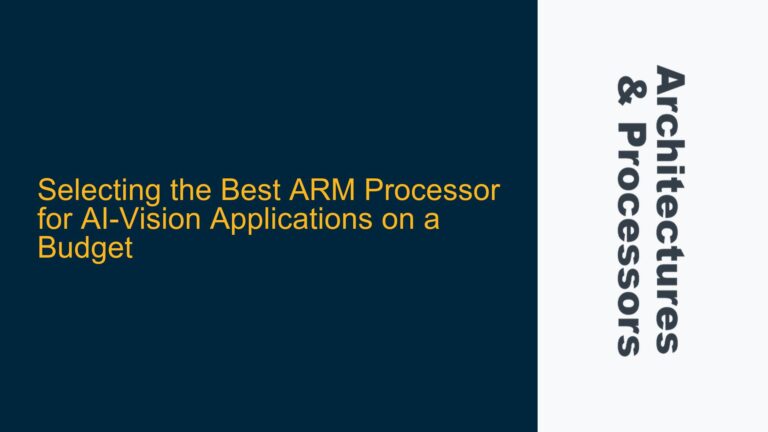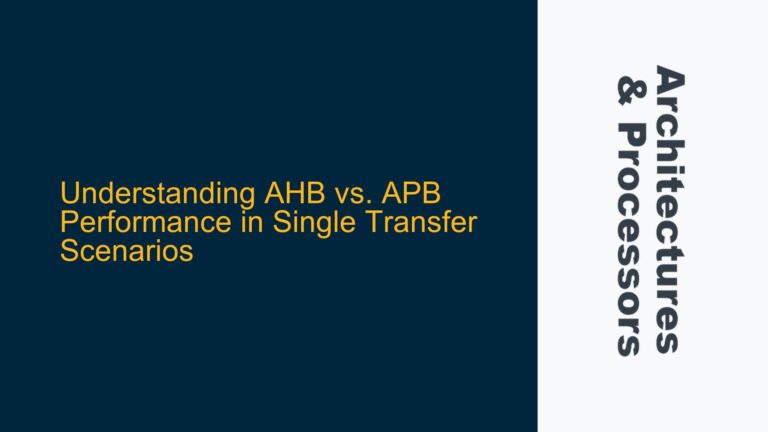PSEL and PENABLE Signal Timing and Protocol Compliance in APB Transfers
The Advanced Peripheral Bus (APB) protocol is a critical component of the AMBA (Advanced Microcontroller Bus Architecture) family, widely used in ARM-based systems for low-bandwidth, low-power peripheral communications. The PSEL (Peripheral Select) and PENABLE (Peripheral Enable) signals are fundamental to the APB protocol, governing the selection and enabling of peripherals during data transfers. Misunderstanding or misimplementing the relationship between these signals can lead to protocol violations, undefined behavior, and system failures. This guide delves into the intricacies of PSEL and PENABLE signal behavior, addressing common questions and providing detailed troubleshooting steps to ensure compliance with the APB protocol.
PENABLE Toggling During PSEL Deassertion and Phase-Specific Assertion Rules
The APB protocol defines strict timing and phase-specific rules for the assertion and deassertion of PSEL and PENABLE signals. A key point of confusion arises from the interaction between these signals, particularly when PSEL is deasserted or during specific phases of the transfer cycle. Understanding these rules is essential for designing compliant APB peripherals and avoiding undefined behavior.
PENABLE can indeed toggle while PSEL is deasserted. This behavior is a consequence of the APB protocol’s support for multiple peripherals connected to a single transfer initiator. Only one PSEL signal is asserted at any given time to select the target peripheral, but all peripherals connected to the initiator observe the PENABLE, PWRITE, and PWDATA signals. This means that even when a peripheral is not selected (PSEL deasserted), it will still see the PENABLE signal toggling during transfers to other peripherals. This design allows for efficient bus utilization but requires careful handling in peripheral implementations to avoid unintended side effects.
PENABLE is only asserted during the ACCESS phase of an APB transfer. The APB protocol defines three phases: IDLE, SETUP, and ACCESS. From the initiator’s perspective, PENABLE is asserted in the ACCESS phase to indicate that the transfer is active. However, from the peripheral’s perspective, if it is not selected (PSEL deasserted), it may remain in the IDLE state while PENABLE is asserted for another peripheral’s ACCESS phase. This distinction is crucial for peripheral designers to ensure that their implementations correctly interpret the PENABLE signal based on the PSEL state.
PSEL must remain high during the SETUP phase. The SETUP phase is the transition state between IDLE and ACCESS, where the address, write data, and control signals are stabilized. If PSEL were to go low during the SETUP phase, it would violate the protocol, leading to undefined behavior. Peripheral designs must ensure that PSEL remains asserted throughout the SETUP phase to maintain protocol compliance.
A protocol violation occurs when PSEL is asserted high in the ACCESS phase while PENABLE is not deasserted. This scenario is undefined by the APB specification, and the resulting behavior depends on the peripheral implementation. Some peripherals may complete the transfer as expected, while others may exhibit erratic behavior. This ambiguity underscores the importance of adhering to the protocol’s timing requirements to ensure predictable system operation.
Protocol Violations and Undefined Behavior in APB Signal Management
Protocol violations in the APB protocol, particularly involving PSEL and PENABLE signals, can lead to undefined behavior, making system debugging and validation challenging. Understanding the root causes of these violations and their potential impacts is essential for designing robust APB-based systems.
One common cause of protocol violations is the incorrect timing of PSEL and PENABLE signals. For example, if PSEL is deasserted during the SETUP phase or PENABLE is asserted outside the ACCESS phase, the peripheral may misinterpret the transfer state, leading to data corruption or loss. Similarly, failing to deassert PENABLE before the end of the ACCESS phase can cause overlapping transfers, confusing the peripheral and resulting in incorrect data handling.
Another potential cause is the misinterpretation of signal states by the peripheral. Since all peripherals connected to the initiator observe the PENABLE signal, a peripheral must rely on the PSEL signal to determine whether it is the target of the current transfer. If a peripheral incorrectly assumes it is selected based on PENABLE alone, it may respond to transfers intended for other peripherals, causing bus contention and data integrity issues.
The undefined behavior resulting from protocol violations can manifest in various ways, depending on the peripheral implementation. Some peripherals may ignore the violation and complete the transfer as expected, while others may enter an error state or fail to respond altogether. This variability makes it difficult to predict the system’s behavior, emphasizing the need for strict adherence to the protocol.
Ensuring APB Protocol Compliance Through Signal Synchronization and Peripheral Design
To avoid protocol violations and ensure reliable APB transfers, designers must implement robust signal synchronization and peripheral design practices. These practices include proper handling of PSEL and PENABLE signals, adherence to phase-specific timing requirements, and thorough validation of peripheral behavior.
Signal synchronization is critical for maintaining protocol compliance. Designers must ensure that PSEL and PENABLE signals are correctly synchronized with the clock and that their transitions align with the APB phase definitions. This synchronization prevents signal glitches and ensures that the peripheral accurately interprets the transfer state.
Peripheral designs must explicitly check the PSEL signal before responding to PENABLE. Since PENABLE is shared among all peripherals, the PSEL signal is the only indicator of whether a peripheral is the target of the current transfer. By validating PSEL before processing PENABLE, peripherals can avoid responding to unintended transfers and prevent bus contention.
Thorough validation of peripheral behavior is essential for identifying and addressing potential protocol violations. Designers should simulate various transfer scenarios, including edge cases such as PSEL deassertion during the SETUP phase or PENABLE assertion outside the ACCESS phase. These simulations help uncover design flaws and ensure that the peripheral behaves predictably under all conditions.
In conclusion, understanding the relationship between PSEL and PENABLE signals is crucial for designing compliant and reliable APB-based systems. By adhering to the protocol’s timing requirements, implementing robust signal synchronization, and thoroughly validating peripheral behavior, designers can avoid protocol violations and ensure predictable system operation. This guide provides a comprehensive overview of the issues, causes, and solutions related to PSEL and PENABLE signal management, equipping designers with the knowledge needed to tackle these challenges effectively.
